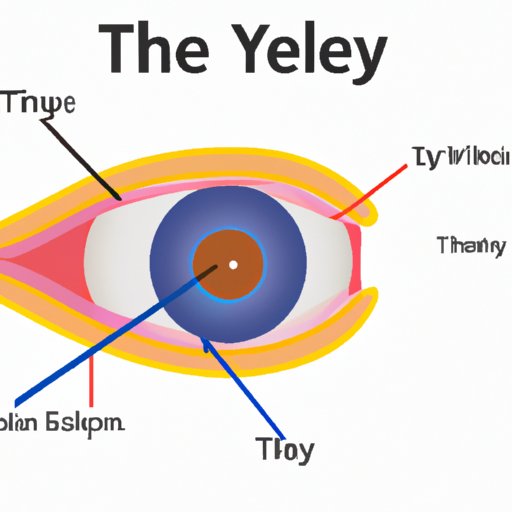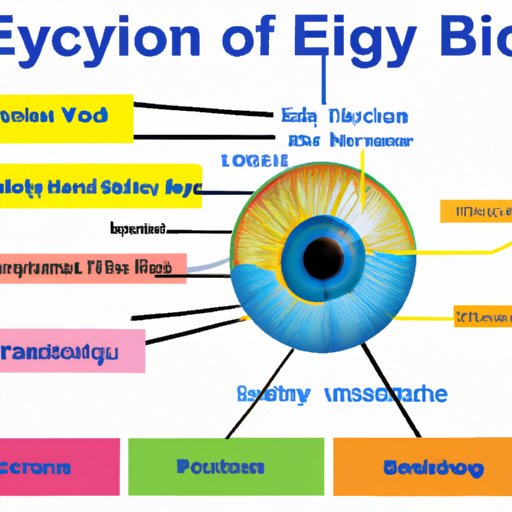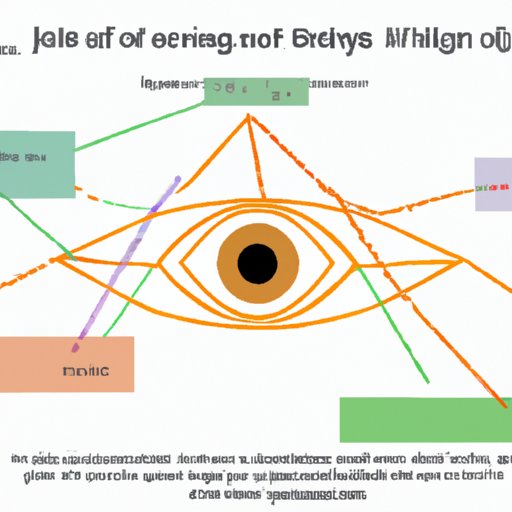Introduction
The human eye is a complex organ that allows us to perceive the world around us through our sense of sight. But how exactly does the eye work? In this article, we will explore the anatomy, physics, and functions of the eye in order to gain a better understanding of this incredible organ.

Anatomy of the Eye: Exploring How It Works
The eye is composed of various structures and components, each of which plays an important role in allowing us to see. The front of the eye contains the cornea, which focuses light onto the lens. The lens then refracts the light and focuses it onto the retina. The retina is a thin layer of light-sensitive cells that convert light into electrical signals. These electrical signals are then sent to the brain where they are interpreted as images.
The eye also contains the iris, which controls the size of the pupil. The pupil is the opening in the center of the eye that allows light to enter. The size of the pupil can be adjusted depending on the amount of light present, allowing the eye to focus on objects both near and far away.

Understanding the Eye: A Detailed Look at Its Functions
The eye is capable of perceiving a wide range of light frequencies, from ultraviolet to infrared. This allows us to distinguish between different colors, shapes, and textures. When light enters the eye, it passes through the lens and is focused onto the retina. The retina then converts the light into electrical signals, which are sent to the brain for interpretation.
The retina contains two types of photoreceptors: rods and cones. Rods are responsible for perceiving low levels of light, while cones are responsible for perceiving color. Both types of photoreceptors convert light into electrical signals, which are then sent to the brain.
The Physics of Vision: Examining the Mechanics of the Eye
The eye relies on a few physical processes to achieve clear vision. Refraction, accommodation, and pupil dilation are all essential parts of the process. Refraction occurs when light passes through the curved surface of the cornea and is bent, or refracted, towards the lens. Accommodation is the process by which the eye adjusts the shape of the lens to focus on objects both near and far away. This is achieved by the ciliary muscles, which contract and relax to adjust the shape of the lens. Finally, pupil dilation is the process by which the pupil expands and contracts to adjust the amount of light entering the eye.
These processes are essential for achieving clear vision. Without them, our vision would be blurry and distorted.
Exploring the Human Eye: Discovering What Goes On Behind Our Sight
The retina is composed of several layers of neurons that are responsible for processing visual information. These neurons are connected to the brain via the optic nerve. Once the visual information has been processed by the retina, it is sent to the brain where it is interpreted as an image.
The retina also contains special cells that are sensitive to color. Color perception is an important part of our visual experience and allows us to distinguish between different objects and surfaces.

Seeing the Big Picture: How the Eye Perceives and Interprets Visual Data
The eye is only one part of the process of seeing. The brain also plays an important role in interpreting visual data. The brain takes the electrical signals sent by the eye and interprets them as images. It also takes into account other sensory information, such as smell, taste, and touch, to create a full picture of the environment.
The brain also plays an important role in depth perception. Depth perception is the ability to judge the relative distance of objects from one another. This is achieved by using cues such as motion parallax, stereopsis, and binocular disparity.
Conclusion
The human eye is a remarkable organ that allows us to perceive the world around us. Through its anatomy, physics, and functions, the eye enables us to see and interpret the visual data that we encounter every day. By understanding how the eye works, we can gain a greater appreciation for the complexity of this amazing organ.
(Note: Is this article not meeting your expectations? Do you have knowledge or insights to share? Unlock new opportunities and expand your reach by joining our authors team. Click Registration to join us and share your expertise with our readers.)
